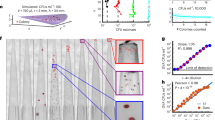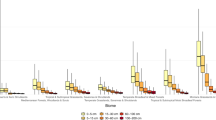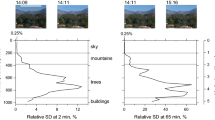Abstract
THE method now in common use for determining the number of bacteria in soil by colony counts admittedly provides an estimate of only a small fraction of the total numbers in the soil, since any one medium will enable only a few of the physiological groups of the bacterial population to develop. The method of direct counts of bacteria in films of the actual soil was rendered possible by the development of a suitable staining technique by H. J. Conn and by S. Winogradsky. Both these workers have suggested methods by which estimates of the bacterial numbers in a soil sample can be made.
This is a preview of subscription content, access via your institution
Access options
Subscribe to this journal
Receive 51 print issues and online access
$199.00 per year
only $3.90 per issue
Buy this article
- Purchase on Springer Link
- Instant access to full article PDF
Prices may be subject to local taxes which are calculated during checkout
Similar content being viewed by others
Author information
Authors and Affiliations
Rights and permissions
About this article
Cite this article
GRAY, P., THORNTON, H. The Estimation of Bacterial Numbers in Soil by Direct Counts from Stained Films. Nature 122, 400–401 (1928). https://doi.org/10.1038/122400a0
Issue Date:
DOI: https://doi.org/10.1038/122400a0
This article is cited by
-
Die Mikrofauna des Bodens, ihr Verh�ltnis zu anderen Mikroorganismen und ihre Rolle bei den mikrobiologischen Vorg�ngen im Boden
Archiv f�r Mikrobiologie (1934)
Comments
By submitting a comment you agree to abide by our Terms and Community Guidelines. If you find something abusive or that does not comply with our terms or guidelines please flag it as inappropriate.



